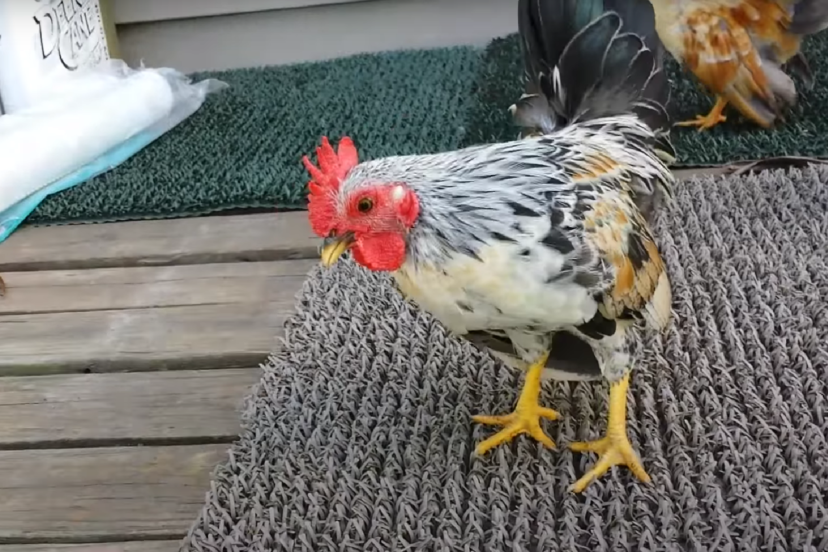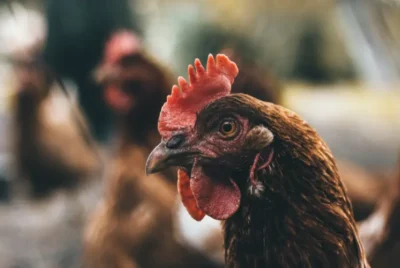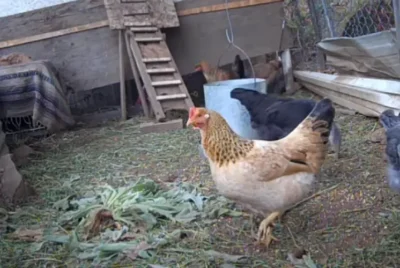Kikiriki Chicken: Traits, Care, and Breeding Tips
Are you curious about the unique Kikiriki chicken? Known for being one of the world’s smallest chicken breeds, these birds boast vibrant plumage and a confident demeanor despite their diminutive size. This guide dives into the essential care, engaging personality, and breeding insights for those interested in Kikiriki chickens, whether you’re a seasoned poultry enthusiast or consider adding these spirited little birds to your flock.
What is a Kikiriki Chicken Breed?
The Kikiriki chicken is a treasure chest of brilliant and varied plumage. These bantam birds are a rainbow of colors, featuring hues from black to red and golden, not to mention their awe-inspiring high-head carriage. Their size might be small, with roosters around 500 grams and hens approximately 425 grams, but their confidence is mighty. These tiny powerhouses are the fearless adventurers of the chicken world, not unlike the chihuahuas of the canine realm.
Beyond their bold demeanor, Kikiriki chickens are also social butterflies. They relish human interaction, making them excellent companions and a delightful addition to any family, especially those with children. They are alert and observant, often the first to warn the rest of the flock of any potential threats.
The Petite Powerhouse of Poultry
Kikiriki chickens, affectionately known as ‘pocket chickens’ or small chickens, hold the record as the smallest chicken breed. Their compact frame, even smaller than smaller chickens, is complemented by fine, smooth feathers, roosters’ well-arched necks, and prominently forward chests.
With straight, long, and clean legged supporting their short, muscular bodies, and the upward-pointing tail adorned with large feathers, Kikiriki chickens boast a distinctive profile that is hard to miss.
The Social Butterfly of the Coop
Kikiriki chickens are not just about looks; they have a friendly disposition that allows them to form strong bonds with their owners. Their calm and peaceful nature makes them easy to handle, making them an ideal choice for keeping as pets.
Thriving on human interaction, these sociable birds quickly form friendly bonds with people. Kikiriki chickens are well-tolerated to handling, making them a suitable choice for family pets and for those who enjoy frequent interactions with their poultry.
The Origin Story of Kikiriki Chickens

The Kikiriki chickens’ journey is a fascinating tale that begins in the 1600s in Kelantan, Malaysia. These birds were developed from crosses between local and Japanese bantam chicken breeds, with a focus on miniaturization and distinctive posture. They were originally known as Serama or Malay Serama, showcasing a rich heritage. The breed was named in honor of the Thai Kings, aligning the Kikiriki chicken with regal significance.
The attractive feathers of Kikiriki chickens made them popular as ornamental birds, often incorporated into decorative poultry collections. Despite being severely impacted by the Asian bird flu epidemic in 2004, the breed persevered and was showcased in the 1990s.
The Serama Council of North America played a pivotal role in introducing the Serama breed, including Kikiriki chickens, to the United States. They promoted the breed at national poultry shows, aiding in their global recognition.
Varieties of Kikiriki
Within the Kikiriki breed, there is a myriad of colors to discover. From black to white and golden, Kikiriki chickens showcase a vibrant palette of colors that makes each bird distinct and visually striking.
Read also: Black Diamond Chicken: A Comprehensive Breed Insight
Kikiriki Hen Egg Production and Motherhood
In terms of egg production, Kikiriki hens have a moderate yield compared to other chicken breeds. They lay approximately 5-7 eggs per month, which averages out to around 60-90 eggs annually. These eggs are small in size, and they can range in color from white to light brown.
Apart from their ability to lay eggs, Kikiriki hens also exhibit a moderate level of broodiness, indicating a decent inclination toward motherhood. Their nurturing instincts make them excellent mothers, capable of hatching and caring for their offspring with great dedication and care.
Comparing Eggs: Kikiriki vs. Other Breeds
In comparison to larger commercial chicken breeds, Kikiriki chicken eggs have the following characteristics:
- Significantly smaller, with eggs weighing between 14 and 25 grams
- It requires three Kikiriki eggs to match the quantity of one larger breed egg
- Kikiriki hens lay around 60-90 eggs annually, which is less frequent than larger egg-laying breeds’ higher annual egg yields.
The eggs of Kikiriki hens range in color from golden light brown to cream and white, and are sometimes speckled, although this is quite rare.
Broody Behavior
Kikiriki hens tend to be broody, as they have a natural instinct to incubate eggs and nurture the resulting chicks. This behavior is a notable trait among this breed of hens. The level of broodiness varies, but generally, Kikiriki hens are excellent mothers who can even adopt and hatch eggs from other less broody breeds.
Kikiriki chickens undergo their reproductive cycle primarily from January to February and again from November until December, laying around 5 to 7 eggs per month. Their egg production and fertile season coincide with these broody periods. However, broodiness can disrupt the egg-laying cycle of Kikiriki hens, impacting the overall egg production during their broody phases.
Kikiriki Roosters: Small but Mighty Protectors
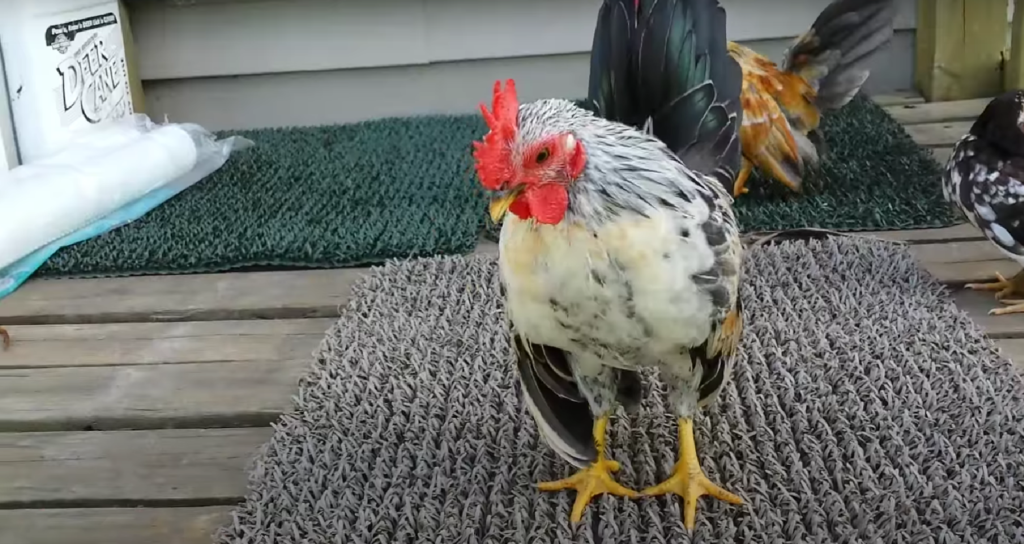
Roosters in a Kikiriki chicken flock play an indispensable role. Despite their small size, Kikiriki roosters are effective protectors of their flock, leveraging their communal nature and clear establishment of the pecking order. They also play a crucial role in hatching fertile eggs when kept at an appropriate hen-to-rooster ratio.
Their inquisitive and docile temperament, coupled with lower aggression levels than larger breeds, sets them apart and reduces potential conflicts within a mixed flock, making them ideal for those seeking a single-comb breed.
The Gentleman of the Garden: Kikiriki Rooster Temperament
Kikiriki roosters are calm and peaceful in nature, making them suitable as gentle pets. They exhibit less aggression and are generally quieter than other roosters from larger breeds.
Their vigilant nature makes Kikiriki roosters effective protectors when foraging, as they are quick to sound the alarm in the presence of predators.
Integrating Kikiriki Roosters with Other Birds
When it comes to integrating Kikiriki roosters with a new flock, it’s important to consider their compatibility with other birds. To protect their small size, you should keep Kikiriki roosters with other Kikirikis or with bantams of other gentle breeds to avoid them becoming targets.
Mixing them with larger or more aggressive birds could pose a risk to their safety. A gradual introduction process is important for integrating Kikiriki roosters with a new flock to minimize stress and aggression.
Before introducing an adult Kikiriki rooster into an established flock, a quarantine period is necessary to safeguard the health of the flock and to observe the rooster’s behavior.
Read also: Top Insights into the Partridge Rock Chicken Breed
Caring for Your Kikiriki Chickens
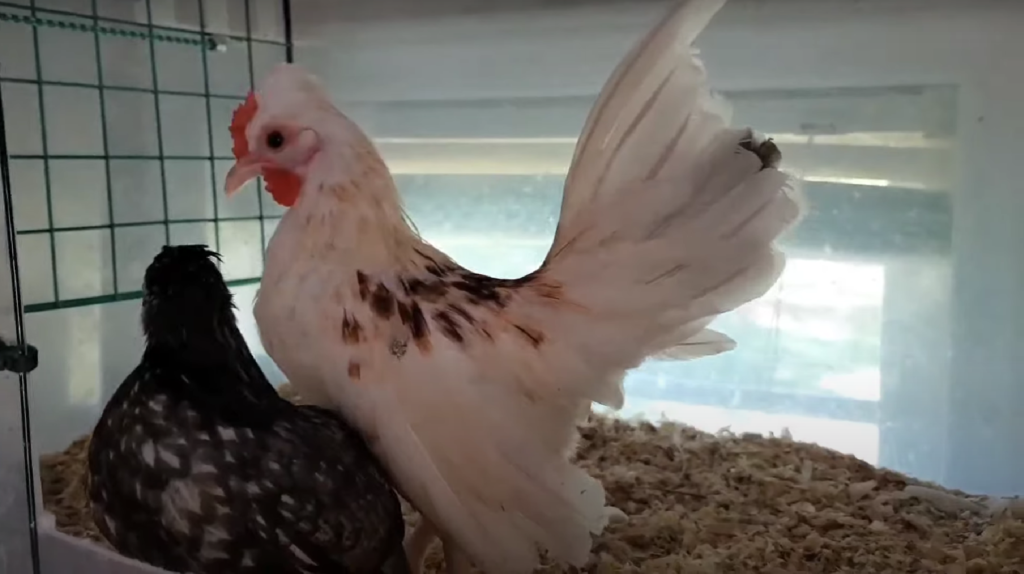
Providing Kikiriki chickens with proper care is crucial for their wellbeing and growth. Kikiriki chickens require a well-ventilated, draft-free shelter to stay dry and warm during cold spells.
Additionally, they thrive in a tropical coop design that is small, light, and portable, providing adequate space for a couple of birds to move comfortably.
Nutritional Needs: What Kikiriki Chickens Eat
Kikiriki chickens thrive on a diet of grains and worms, supplemented with high-quality chicken feed boasting 16-18% protein content to meet their nutritional needs.
During their growth phase, Kikiriki chicks need a starter-grower feed with at least 18% protein, as well as vital nutrients like amino acids, prebiotics, probiotics, vitamins, and minerals.
Shelter Requirements
You should keep Kikiriki chickens in environments that are warm and dry, as they do not fare well in cold climates. In colder regions, you may need to insulate their coops to maintain a temperature above fifty degrees Fahrenheit.
A minimum space allocation of 2 square feet per Kikiriki chicken inside the coop and 8 square feet per bird in an outdoor run is necessary to maintain their health and allow for natural behavior.
Breeding and Raising Kikiriki Chickens
To maintain breed standards when breeding Kikiriki chickens, it is necessary to select specific traits like upright posture, small size, and refined feathering. After the eggs are laid, they require an incubation period of 19-20 days.
From Egg to Adult: The Kikiriki Life Cycle
The life cycle of Kikiriki chickens is unique and captivating. It goes through several stages:
- Incubation of the eggs that lasts for 19 days
- Teenage stage is where they experience significant feather development and establish a pecking order
- Reaching maturity and being able to reproduce at approximately 16 to 18 weeks of age
The journey of a Kikiriki chicken from egg to adult is truly fascinating.
Overcoming Challenges: Health and Safety Precautions
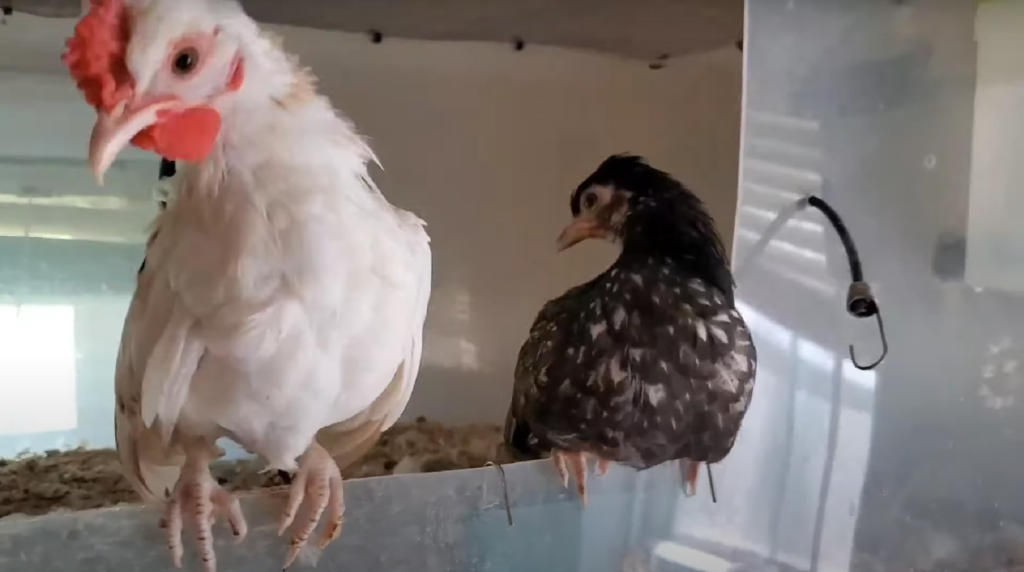
Raising Kikiriki chickens can be rewarding, but awareness of potential health challenges and safety precautions is essential. Kikiriki chickens are prone to infections and historically faced a significant population decline due to the presence of bird flu. To mitigate health risks, regular coop cleaning and infection checks are essential preventive measures.
Using heat lamps or heated pads can help maintain a warm and comfortable environment in the coop for kikiriki chickens during winter. Providing bedding like straw or wood shavings is crucial for heat retention, keeping kikiriki chickens safely insulated from cold weather. You can also use heated chicken waterers.
My list of proven and tested heated chicken waterers
Winter-proof your chicken care routine like I did! After testing various heated chicken waterers, I can confidently recommend them for hassle-free hydration
Check out my recommendation of the best-heated chicken waterers here. Enhancing Your Flock with Kikiriki Chickens
Companionship and Diversity: The Role of Kikiriki in a Mixed Flock
To prevent bullying by more dominant breeds, you should keep Kikiriki chickens in mixed flocks with the same breed or other bantam chickens. They enhance the social dynamics of a mixed flock, showcasing their unique personalities and behaviors alongside other chickens.
The presence of Kikiriki chickens in a mixed flock can highlight the individuality and sentience of farm animals, thus fostering a deeper appreciation for animal welfare.
Showmanship and Competition: Kikiriki Chickens in the Spotlight
Kikiriki chickens are not only great companions, but they also have the potential to be stars in the show ring. With their unique appearance and distinctive traits, Kikiriki chickens can compete in poultry shows, delighting judges and audiences alike. Specific traits of Kikiriki chickens, such as crested heads (moñahueso) and short legs (pata corta), are highly prized in showmanship competitions.
The American Serama Association works towards getting recognized color varieties included in the standards of poultry associations.
Summary
Tthe Kikiriki chicken breed is a unique and captivating one, characterized by its small size, diverse colors, bold demeanor, and friendly nature.
Whether you’re considering adding them to your flock or simply intrigued by their charm, the journey into the world of Kikiriki chickens is sure to be an enlightening and fascinating one.

